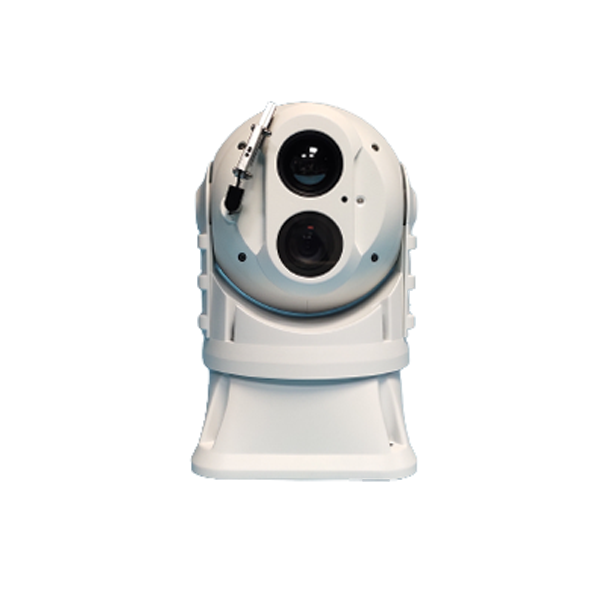Understanding Marine Thermal Cameras: Key Features and Benefits
Marine thermal cameras are essential for enhancing safety and navigation capabilities on vessels. These cameras are specifically designed to detect infrared radiation emitted by objects and convert it into a visible image. This technology is crucial for maritime applications, helping to identify obstacles, other vessels, and even people in low visibility conditions such as fog, total darkness, or heavy rain.
Benefits of Thermal Imaging
The primary advantage of thermal imaging is its ability to provide clear images regardless of lighting conditions. This is particularly beneficial for night-time navigation and during adverse weather conditions. Additionally, thermal cameras can detect heat leaks or equipment malfunctions, contributing to the overall safety and efficiency of the vessel.
Assessing Your Vessel's Needs: Tailoring Camera Selection
Choosing the right thermal camera involves understanding the specific requirements of your vessel. Factors such as vessel size, intended use, and typical environmental conditions play critical roles in camera selection.
Vessel Size and Type
For large vessels, a camera with a longer range and broader field of view is necessary to cover extensive areas. In contrast, smaller boats might require a compact camera design that offers sufficient coverage while maintaining portability and ease of installation.
Resolution and Image Quality: Why It Matters
Image resolution is a critical factor when selecting a thermal camera. Higher resolution cameras provide clearer and more detailed images, which can be crucial in identifying distant or small objects.
Resolution Parameters
The resolution of marine thermal cameras typically ranges from 320x240 to 640x480 pixels. Higher resolution options are better suited for identifying smaller objects from a distance, which enhances navigation and situational awareness.
Camera Range and Detection Capabilities: Ensuring Adequate Coverage
The detection range of a thermal camera determines how far and how well it can identify objects. This capability is particularly important to ensure the camera meets the safety and navigation needs of the vessel.
Analyzing Detection Range
Typical detection ranges can vary between 1,500 to 3,000 meters. Choosing a camera with an appropriate range ensures that you have sufficient time to react to potential threats or obstacles.
Tilt and Pan Functionality: Enhancing Surveillance Efficiency
The ability to tilt and pan is essential for maximizing surveillance coverage. These features allow the camera to be more adaptable to changing conditions and expanded areas of interest.
Functional Specifications
Panning capabilities typically cover 360 degrees, while tilt functions can range from -90 to +90 degrees. Compact tilt marine cameras should offer seamless movement to ensure comprehensive monitoring and quick response to stimuli.
Integration with Existing Systems: Ensuring Compatibility
Integration with existing navigation and safety systems is crucial for a seamless experience. Compatibility with radar systems, GPS, and onboard displays should be considered.
Compatibility Considerations
- Review existing systems and confirm compatibility with camera software.
- Check for OEM options that fit seamlessly with existing equipment.
- Engage with suppliers to ensure the required technical support and installation capabilities.
Environmental Resilience: Weather and Marine Suitability
A marine thermal camera must withstand the harsh conditions often encountered at sea. Environmental resilience, such as water and dust resistance, is vital for reliability.
Durability and Standards
Look for cameras with an IP (Ingress Protection) rating of at least IP66. Higher ratings indicate better protection from water and dust, ensuring the longevity of the equipment in China’s varied marine environments.
Power Consumption and Efficiency: Balancing Performance and Sustainability
Energy efficiency is a major consideration for marine thermal cameras, especially in optimizing overall vessel performance and longevity.
Efficiency Metrics
When reviewing power consumption, consider cameras with power ratings between 8 to 15 watts. Energy-efficient models reduce load on the vessel's power system and contribute to lower operational costs.
Budget Considerations: Balancing Cost and Features
While it’s crucial to ensure the camera meets all necessary specifications, budget constraints can play a significant role in decision-making.
Cost-Benefit Analysis
Evaluate cameras based on their cost relative to crucial features such as resolution, range, and integration capabilities. Engaging with OEM suppliers in China can offer cost-effective solutions while maintaining quality.
Installation and Maintenance: Practical Considerations
Consideration of installation and maintenance requirements ensures the longevity and reliability of the thermal camera system.
Ease of Installation and Upkeep
Choose cameras that offer straightforward installation processes and require minimal maintenance. Supplier support for service and repairs is also a critical factor in ensuring uninterrupted operation.
Soar Provide Solutions
For vessel operators looking for Compact Tilt Marine Thermal Cameras, Soar provides comprehensive solutions tailored to meet diverse maritime needs. By combining cutting-edge technology with unparalleled OEM capabilities, Soar ensures that each system integrates seamlessly with existing infrastructure. This commitment to quality, along with a network of reliable suppliers in China, guarantees that Soar remains a trusted choice for enhancing maritime safety and efficiency.

